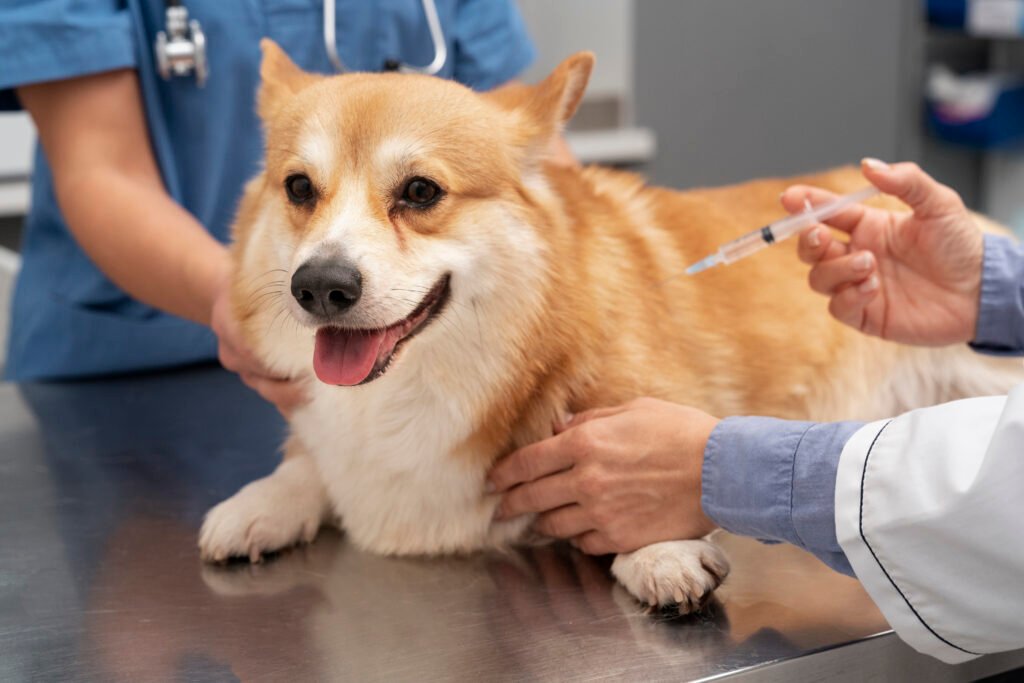
Canine Parvovirus in Dogs: Symptoms, Treatment, and Prevention
Canine parvovirus is one of the most feared illnesses among dog owners and veterinarians. This devastating viral disease can cause severe illness and even death in puppies if left untreated. Understanding the signs, causes, treatments, and prevention methods of parvo in dogs is essential for every pet owner.
What Is Canine Parvovirus?
Parvovirus in dogs is a highly contagious viral disease, most dangerous to unvaccinated puppies between 6 weeks and 6 months old. The virus attacks fast-dividing cells in the body, especially those in the intestines, bone marrow, and lymphatic system.
This leads to severe gastrointestinal damage, immune suppression, and life-threatening dehydration. Without immediate treatment, parvo can kill a puppy within just 24–48 hours.
How Parvo Affects Dogs
The virus primarily attacks:
Intestinal lining → causes vomiting, diarrhea, and internal bleeding.
Lymphatic system & bone marrow → weakens the immune system, leaving the dog vulnerable to infections.
Heart (in rare cases) → may cause inflammation, arrhythmias, and heart failure in young puppies.
Because puppies have a higher body surface-to-weight ratio, even small amounts of fluid loss quickly lead to dehydration and shock.
Symptoms of Parvovirus in Dogs
Watch for these common signs of parvo in dogs:
Lethargy and weakness
Loss of appetite
Vomiting (sometimes with blood or bile)
Severe diarrhea, often bloody
Abdominal pain or hunching
Rapid dehydration
Fever or low body temperature
If you notice these symptoms, seek veterinary help immediately. Parvo can progress rapidly, and early intervention is critical.
How Parvo Spreads
Canine parvovirus is extremely contagious. It spreads through:
Feces or vomit from infected dogs
Contaminated surfaces (bowls, bedding, kennels, carpets, grass)
Human hands, clothing, or shoes carrying the virus
The virus is resistant and can survive for months to years in the environment, even after cleaning.
Diagnosing Parvovirus in Dogs
Veterinarians typically use:
Parvovirus SNAP test (ELISA test): quick fecal swab test.
PCR test: confirms infection with higher accuracy.
Blood tests: to measure white blood cell levels.
Treatment Options for Parvo in Dogs
There is no direct cure for canine parvovirus. Treatment focuses on supporting the dog’s body until the immune system can fight off the infection.
Typical veterinary care includes:
Isolation & hospitalization to prevent spreading.
IV fluid therapy & electrolytes to combat dehydration.
Antibiotics to prevent secondary bacterial infections.
Anti-nausea medication to reduce vomiting.
Antacids & gastroprotective meds to heal the intestines.
Nutritional support with easily digestible food.
Monitoring blood glucose and providing supplements if needed.
Tender care & close monitoring of vital signs.
In severe cases, vets may perform plasma transfusions or even fecal transplants to restore gut health.
⚠️ Important: There are no reliable home remedies for parvo. Delaying veterinary care by trying unproven treatments can mean the difference between life and death
Outpatient Treatment (When Hospitalization Isn’t Possible)
If hospitalization is unaffordable, some vets may recommend outpatient care, which includes:
Daily fluid therapy
Antibiotic and anti-nausea injections
Oral electrolytes and anti-diarrheal medications
While this approach is less effective, some dogs do survive with dedicated home care under veterinary guidance.
Recovery and Long-Term Outlook
With intensive treatment, survival rates vary between 50–70%. Puppies that recover usually gain lifelong immunity to the strain they were infected with and can live normal, healthy lives.
Preventing Parvovirus in Dogs
Prevention is far easier (and cheaper) than treatment. Key steps include:
Vaccination: Puppies should start their parvo vaccine series at 6 weeks, with boosters every 3–4 weeks until 16 weeks of age, followed by annual boosters.
Controlled socialization: Only allow interaction with vaccinated dogs until your puppy is fully vaccinated.
Disinfection: Use bleach or strong disinfectants to clean contaminated areas, bedding, and surfaces. Sunlight and time help reduce the virus in outdoor areas.
Quarantine: Keep infected or recovering dogs away from unvaccinated dogs for at least 40 days.
Conclusion
Canine parvovirus in dogs is one of the deadliest yet preventable diseases. It spreads quickly, causes devastating illness, and often results in death if untreated. But with timely veterinary care, supportive treatment, and most importantly, proper vaccination, you can protect your dog from this life-threatening virus.
If you have a puppy, talk to your veterinarian today about the parvo vaccine — prevention truly saves lives.
Pingback: 10 Essential Facts About Heartworm Disease in Dogs – Symptoms, Treatment & Prevention